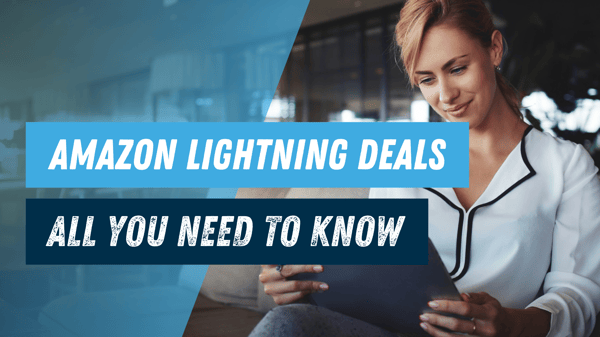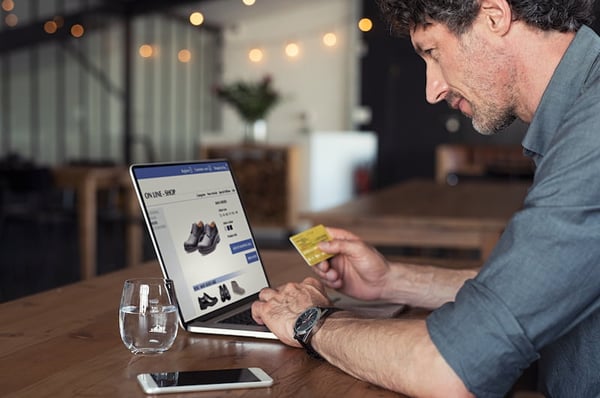Let’s state the obvious: Amazon is getting more crowded. Brands need to differentiate their offering in order to win over and retain online shoppers.
Lightning Deals (LDs) can provide sellers and vendors with a much-needed spark. Many Bobsled clients implement LDs regularly to supercharge sales velocity and exposure. In today’s blog post, Bobsled’s Lindsay Baker and Tamara Vuković have shared all of their insights and recommendations on this topic.

What are Amazon Lightning Deals?

Lightning Deals are limited-time flash sales that run for up to six hours and are featured on the Amazon Deals page, one of the most highly trafficked parts of the marketplace.
LDs are one of the many ways Amazon keeps bargain-focused shoppers engaged and loyal to the channel. In 2019 Amazon reported that they host 45,000+ Lightning Deals in a non-Prime Day month, and this number would’ve increased dramatically since then considering the bump in sellers on the marketplace. That’s a lot of deals!
Above: Lindsay Baker, Bobsled Project Manager
Who can use Amazon Lightning Deals?
Originally, Lightning Deals were an invite-only feature. Amazon would handpick sellers to participate. Now, sellers and vendors alike can run LDs.
- On Seller Central, you have to wait for Amazon to give you LD alerts
- Sellers must apply for a LD on a product that Amazon recommends within their inventory
- If you miss the window, the opportunity is lost!
- On Vendor Central you can set a deal up on your own accord
On both platforms, you must have a 3-star minimum product rating. On Seller Central, your offer must be Prime-eligible, as explained by Amazon.

Eligible products are automatically displayed in the Eligible ASINs section of the Deals Dashboard when they meet a variety of criteria related to category, fulfillment method, condition, seller feedback rating, return rate, and more (subject to change based on country and time of year).
You can choose to Create a Deal from the list of eligible ASINs in the Select Products tab of the Deals Dashboard. Eligible ASINs are refreshed every week, so an eligible ASIN you see this week may not necessarily be there next week.
Above: Tamara Vuković, Bobsled Account Specialist
How do Amazon Lightning Deals work?
LDs offer customers a discount for a limited time. There is a select quantity of discounted units available for each deal. Every LD on the deal page runs for up to six hours or until the product completely sells out, whichever comes first.
For sellers and vendors, LDs are a pay-to-play program. The cost ranges from $150 to $600 per ASIN depending on the time of year. Additionally, Amazon stipulates how much you must discount your products to participate.

The deals are laid out in a way that demands action. Shoppers can see how big their savings are – the sale price is listed above a crossed out regular price with the percentage saving highlighted. They can also see what percentage of the product’s stock has already been claimed by other shoppers, and how much time is left on the deal.
💡Check out Amazon Lightning Deals: Do they live up to the hype?
Importantly, LDs are limited to one per customer. When a customer adds a LD to their cart, they have 15 minutes to process the transaction or they miss out on the deal. Even if a customer comes across a LD outside of the deal page (e.g. through an ad or via the search tool), Amazon still notes that the product has a limited-time offer currently running.
A significant benefit of LDs is increased brand exposure. There is also the ‘halo effect’, which is an increase in organic discovery and sales both during and after the deal has run. This is attributed to the fact that on the day that LDs run, the Best Seller Rank (BSR) for impacted SKUs tends to skyrocket.
How do I create an Amazon Lightning Deal?
Creating a deal is easy. Simply accept Amazon’s recommendations, and specify the lowest price you’re prepared to offer each SKU (the ‘minimum price’). In terms of timing, brands can choose the week that the deal is run, but not the exact date or time that the LD will go live on Amazon.
You will be charged for each Lightning Deal or 7-Day Deal that is submitted and has successfully run. The fee is displayed as part of the Deal creation workflow when you select the schedule for the Deal.
Deciding whether or not to take advantage of a LD requires an acceptance of risk. This is predominantly because Amazon can run the four-hour deal whenever they choose within the date range selected. For example, if your deal runs from 2am - 8am, you aren’t going to get optimal exposure due to the low amount of traffic on Amazon at that time of day.
💡Check out Planning for Promotions: Why It's Important to
Plan Ahead for The Year
Where do Lightning Deals appear on Amazon?
LDs are featured on the Amazon Deals page, one of the most visited pages on Amazon. Some deals show the future expiration using the format hh:mm:ss.
Above: Example of Lightning Deals for Grocery items
Why are Amazon Lightning Deals useful?
Featuring a product as a LD may help increase sales and can also be an effective way to reduce excess inventory.
- On average, a product sees an approximate 65% boost in sales the day of the Lightning Deal.
- The day after the sale, the boost is still there but it drops to close to 39%.
- On day three, it’s down to 22%, and 19% on day four.
- By day six the boost is below 10%, continuing the normalization trend back to its original sales numbers over the next eight days.
Overall, a product will generally experience a 200% bump in average daily sales from a Lightning Deal. That means that if a product normally experiences 10 sales daily, the two-week period post-Lightning Deal should average out to an extra 30 units of sales per day.
Pros and Cons of Amazon Lightning Deals
LDs come with several pros and cons.
Pros
- Great exposure and increased visibility for new products
- ‘Halo effect’ bump – expect sales to increase for up to a month after the LD has run
- Helps liquidate excess inventory or discontinued SKUs quickly and efficiently
- Gain an edge over other sellers and vendors and win new customers – really helpful for brands in ultra-competitive categories with minimal differentiation between products
Cons
- The fee can be cost-prohibitive to some brands
- The ‘halo-effect’ is relatively short-lived
- You do not have control over the exact timing of when the LD will run
- To qualify, Amazon requires you to provide steep discounts, hurting your channel profitability
- To qualify, Amazon requires you to provide a minimum quantity of units for the LD, hurting your inventory levels
- Appropriate inventory must be available in FC’s at least a week prior to the LD running

What are some Lightning Deal best practices for brands?
- Before running a LD ensure that your product display page is optimized with content that will increase your chances of converting the increased traffic, such as:
- Enticing product title, bullet points, and product description
- Ensure use of high-quality product images, 7 or more images recommended
- A+ content
- Include video if possible
- Ensure availability of enough inventory to account for the expected halo effect after the LD ends
- Ensure that the product being promoted via a LD is relevant, seasonally speaking. This will translate to better LD and halo effect results
- Consider if the deal is competitive, both to other brands and similar products in your space, but also to other deals possibly available off-Amazon
- If possible, consolidate and prolong the halo effect uptick with more aggressive PPC efforts for impacted SKUs.
Are Lightning Deals right for your brand?
Lightning Deals certainly don’t make sense for every vendor or seller. In some cases, the sales spike and ongoing halo effect may fail to outweigh the profit margin and inventory level hit.
Overall, if LDs are not too cost-prohibitive, you should definitely test out the effectiveness of this type of promotion as soon as possible, as they may offer a way to help increase your competitiveness in the marketplace.

Tagged: PPC Advertising, Amazon Account Management, Amazon Display Advertising
.png)

